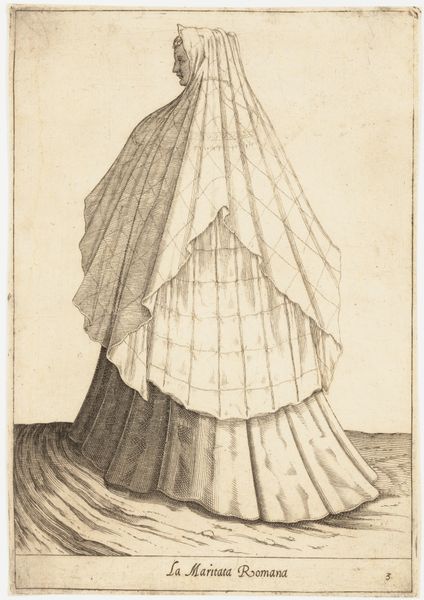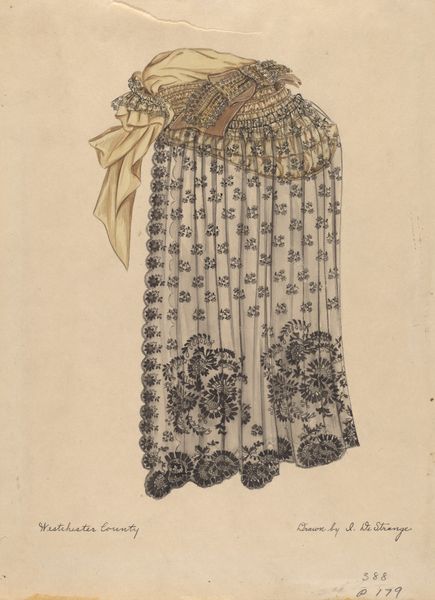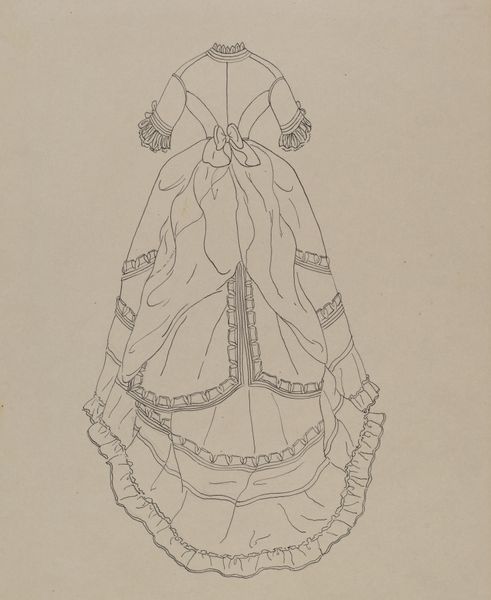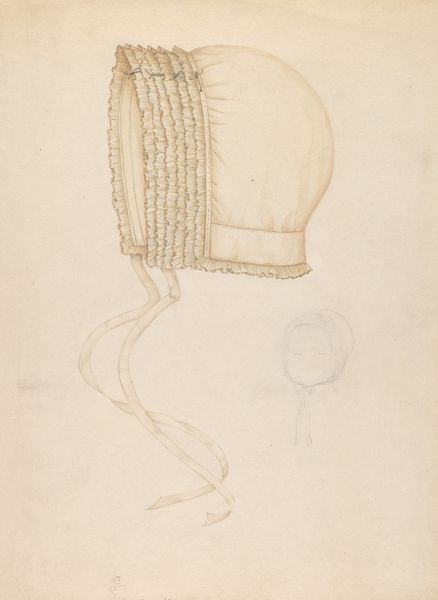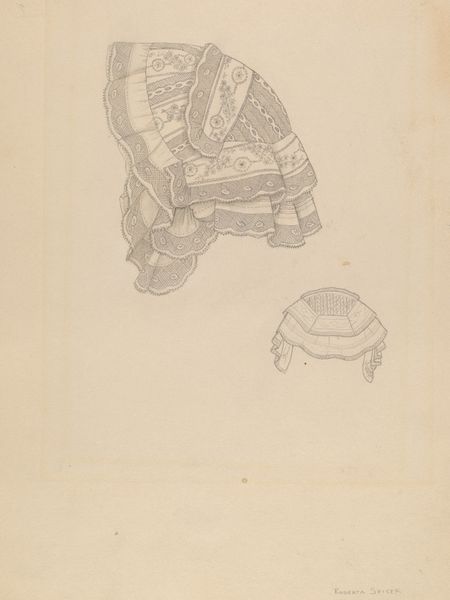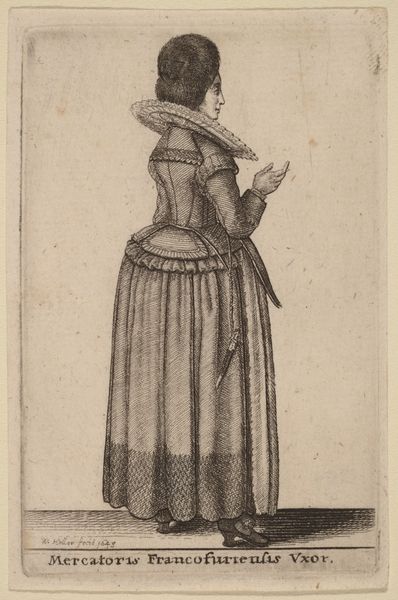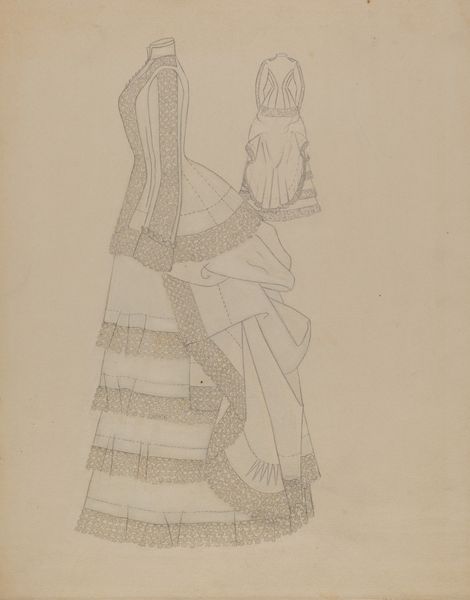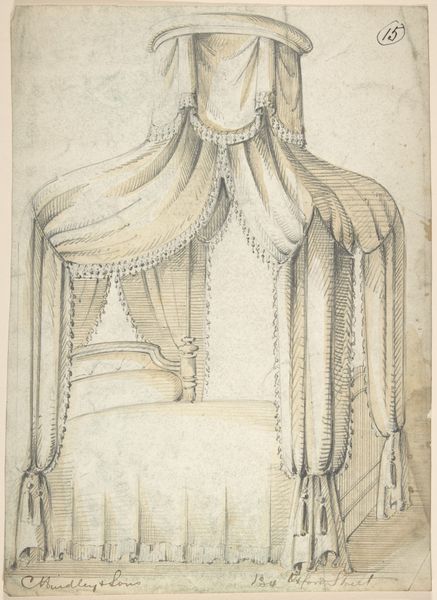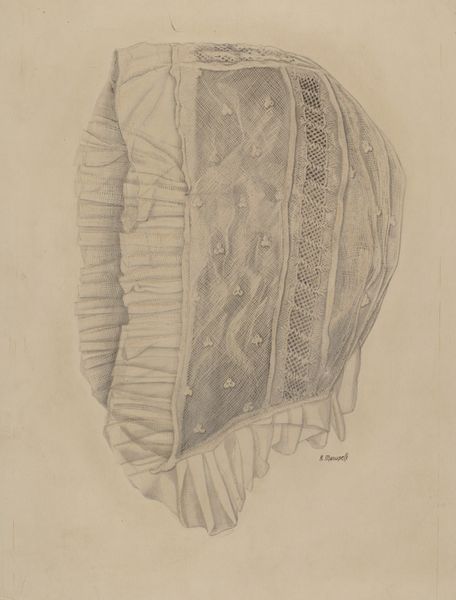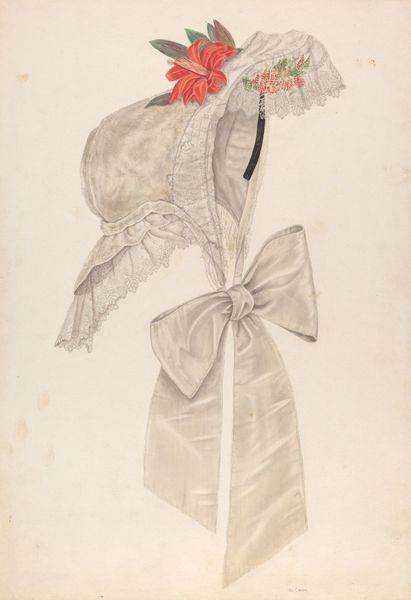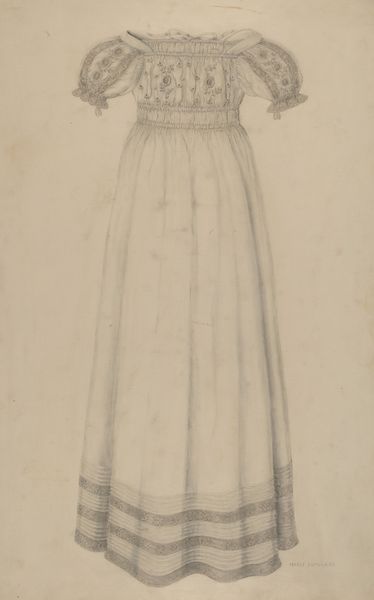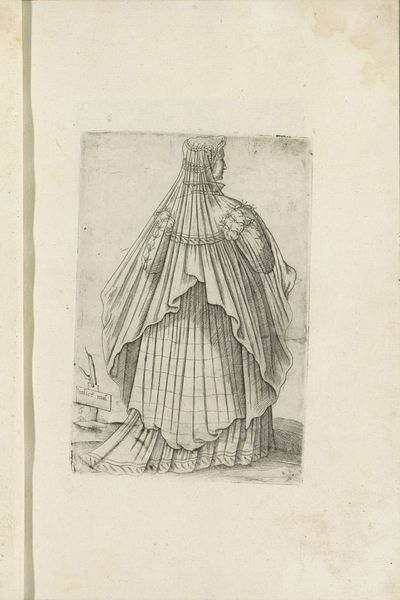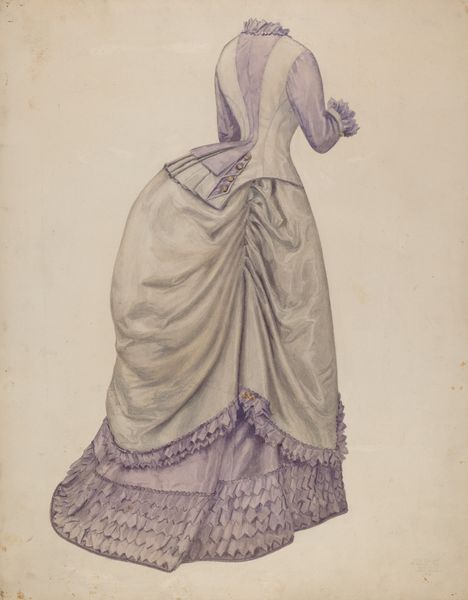
drawing, pencil
#
drawing
#
figuration
#
pencil
#
academic-art
Dimensions: overall: 43.4 x 28.8 cm (17 1/16 x 11 5/16 in.)
Copyright: National Gallery of Art: CC0 1.0
Curator: I'm immediately drawn in by the cascade of ruffles; it evokes a sense of movement and ceremony. It feels quite theatrical. Editor: Indeed! What we’re looking at here is a pencil drawing from around 1937, simply titled “Dress,” by Mary E. Humes. This artist positions the dress, seemingly weightless, center-frame against a light ground. But to understand it more completely, we must consider the context in which Humes worked—examining constructions of gender, aspiration, and visibility during this interwar period. Curator: I agree. It’s difficult not to see the layers of this dress, literally and figuratively. The repeated motifs - ruffles, the rose-like ornament - feel symbolic, communicating an unspoken language. Editor: How so? What meanings do they hold? I immediately connect this with Victorian mourning rituals or debutante displays—ceremonies where dress signaled status and propriety, all against the background of a world at odds with itself in that historical moment. These repeated motifs, while decorative, also functioned as codes, demarcating social boundaries and personal narratives in very specific and limiting ways. Curator: Yes, precisely. Think about the rose, it is an ancient symbol of love, beauty, and secrecy but even tragedy, maybe speaking about some societal pressures placed on the wearer. The weight of all those expectations manifest in the drawing through these repeating ruffles as well; this accumulation echoes throughout different historical representations to signify certain class, power dynamics, or social statuses conferred onto wearers as part of prescribed scripts within given eras… Editor: Absolutely. We shouldn’t ignore the dress itself, as a sartorial artifact it speaks of ideals: What feminine forms are being highlighted or concealed? What social expectations regarding elegance, and gender roles were operative at this time? And ultimately what restrictions would have applied to the actual people wearing clothes similar to this one when Humes sketched it! Curator: It reminds us of art’s power to simultaneously celebrate and critique, or perhaps, to invite us to think deeper. I have certainly re-evaluated my spontaneous, immediate impressions, thank you! Editor: Agreed. Looking more deeply at how visual symbols can embody lived experiences has really enhanced my understanding, too!
Comments
No comments
Be the first to comment and join the conversation on the ultimate creative platform.
